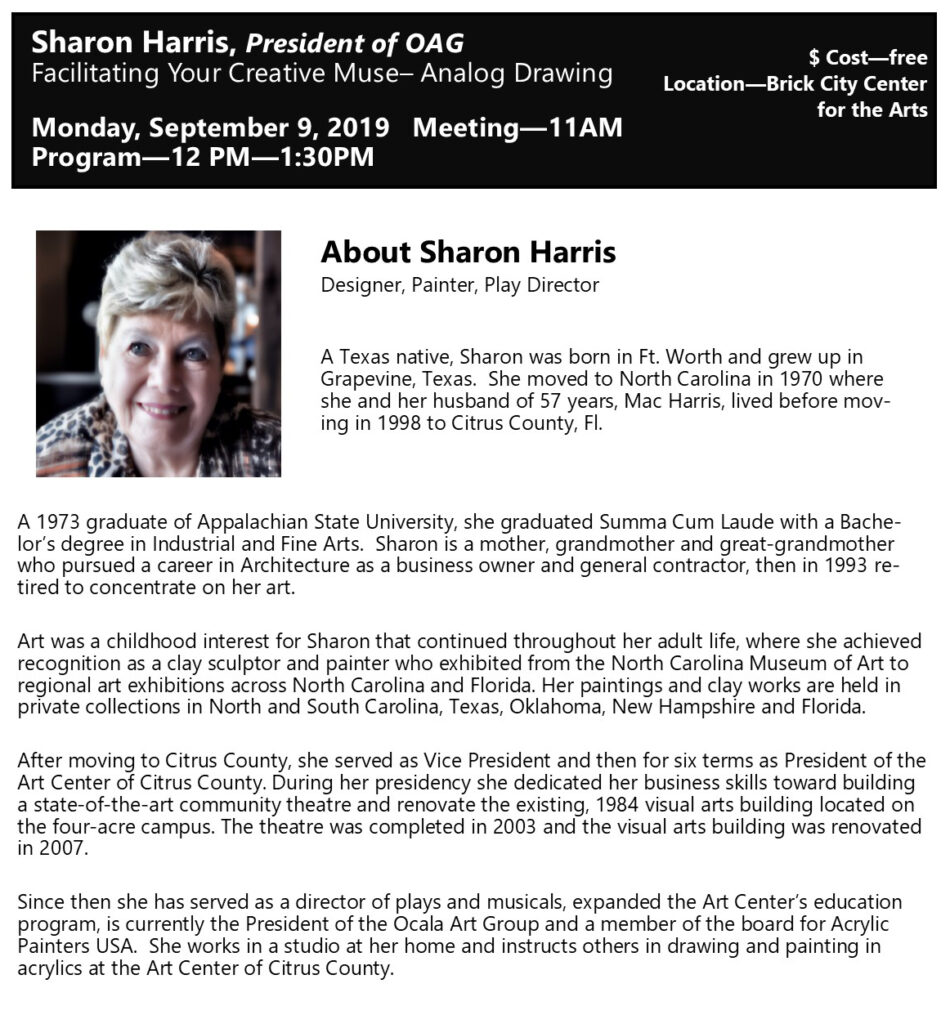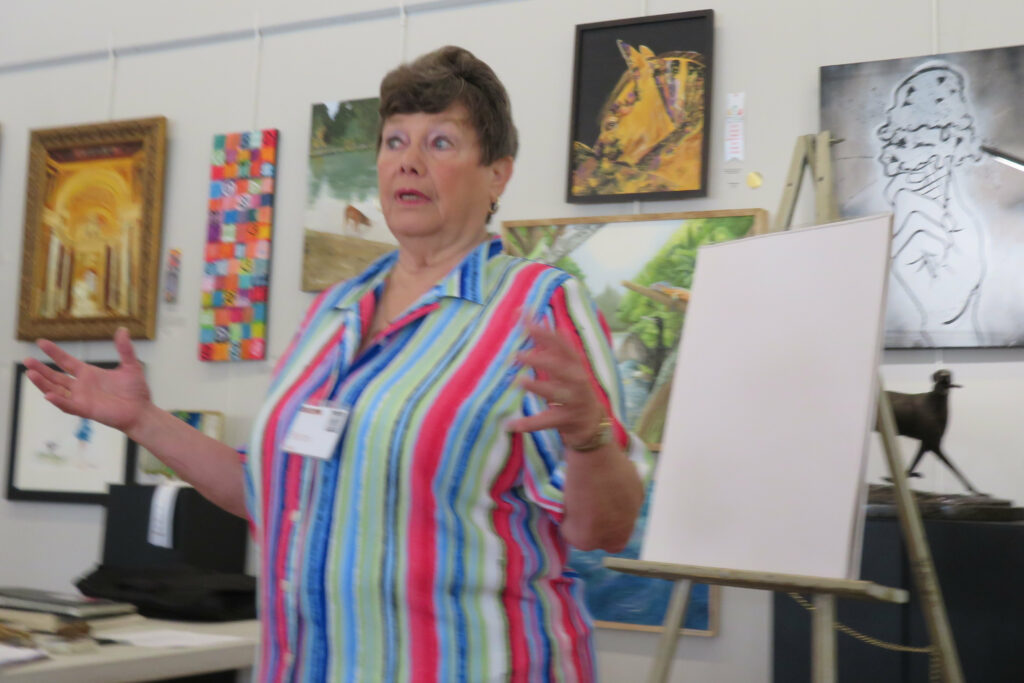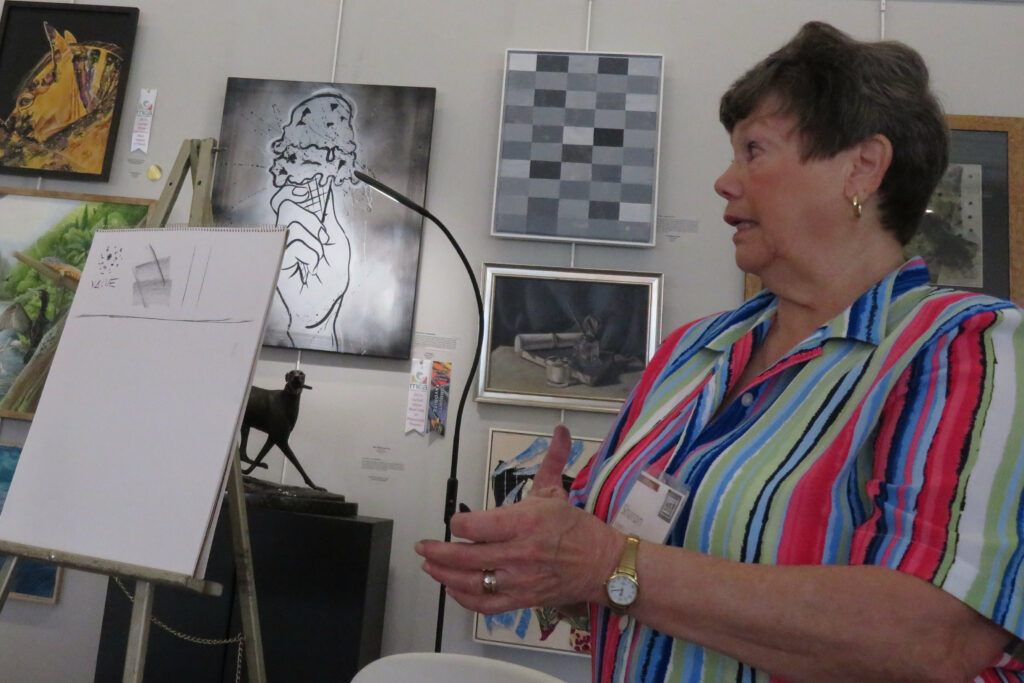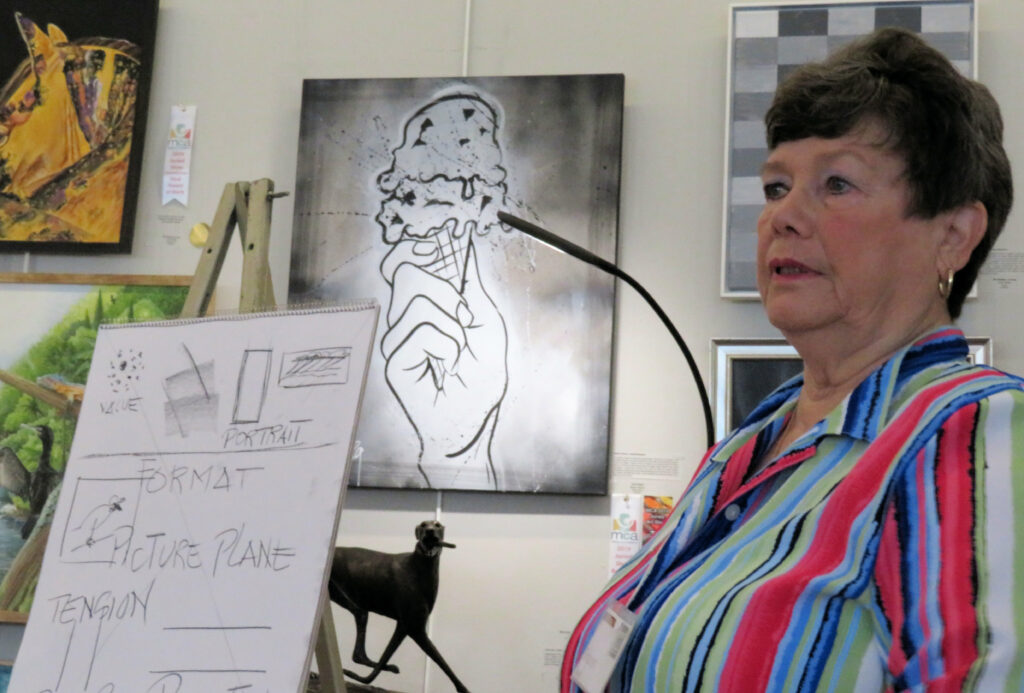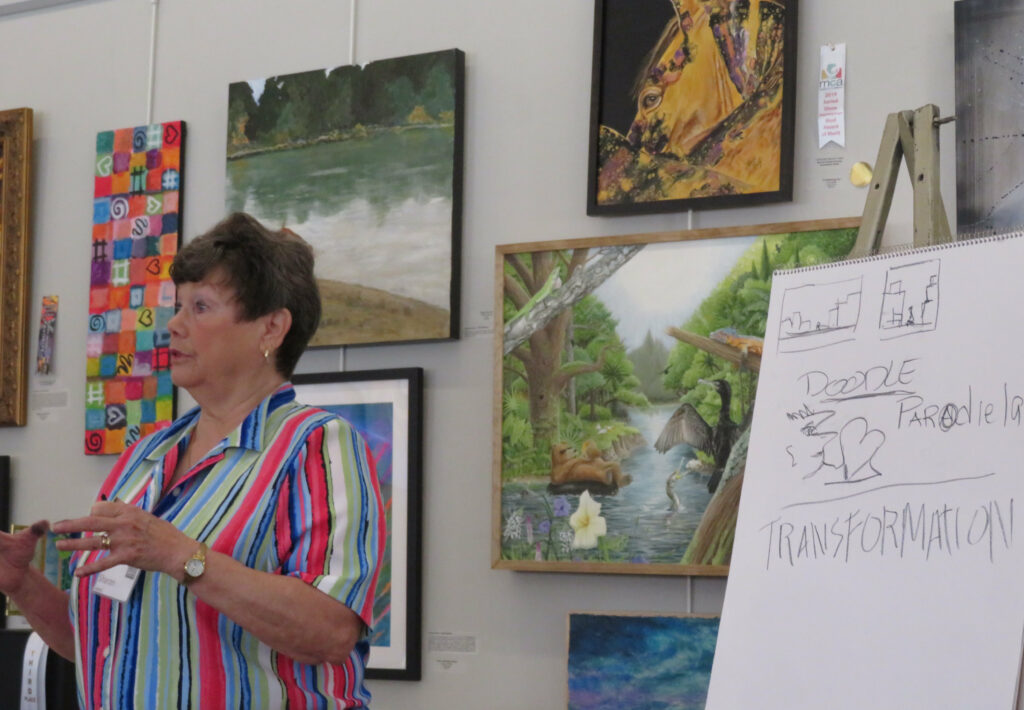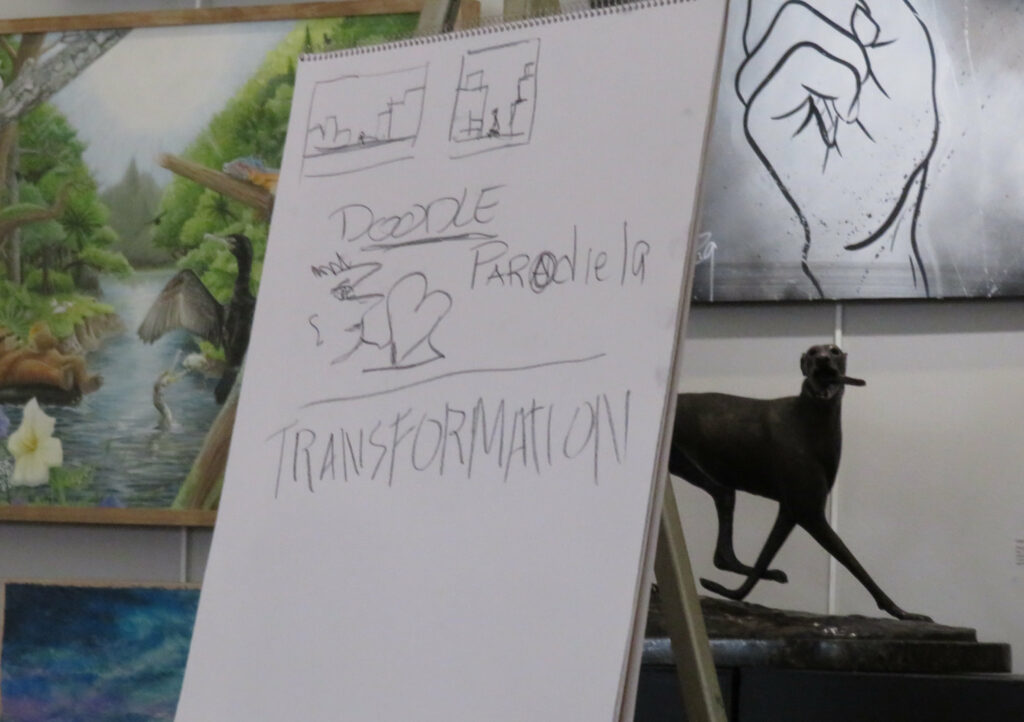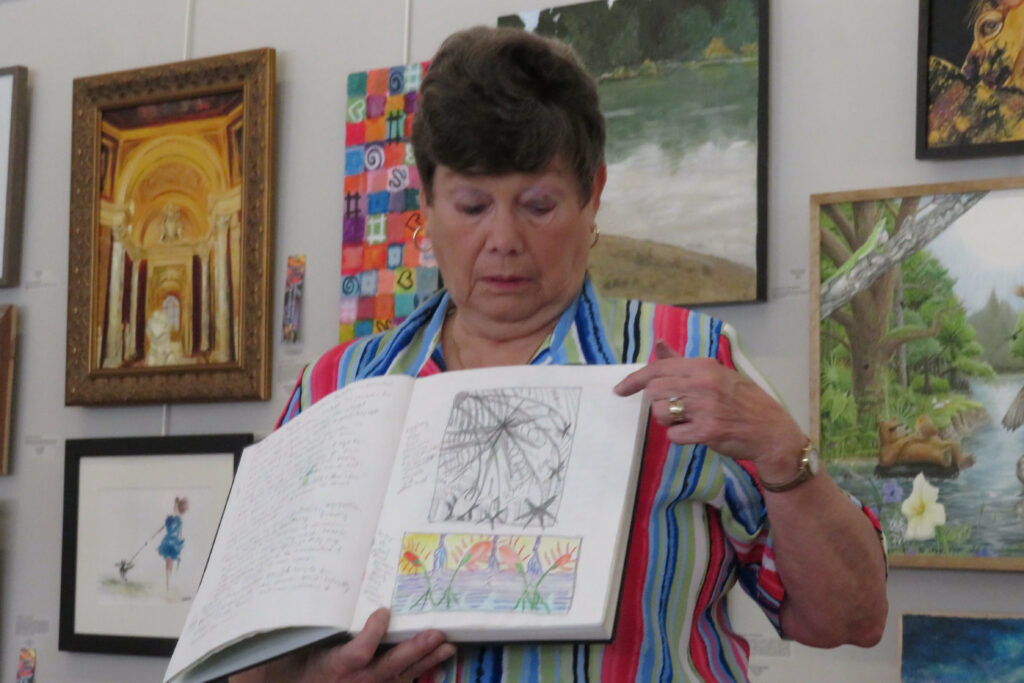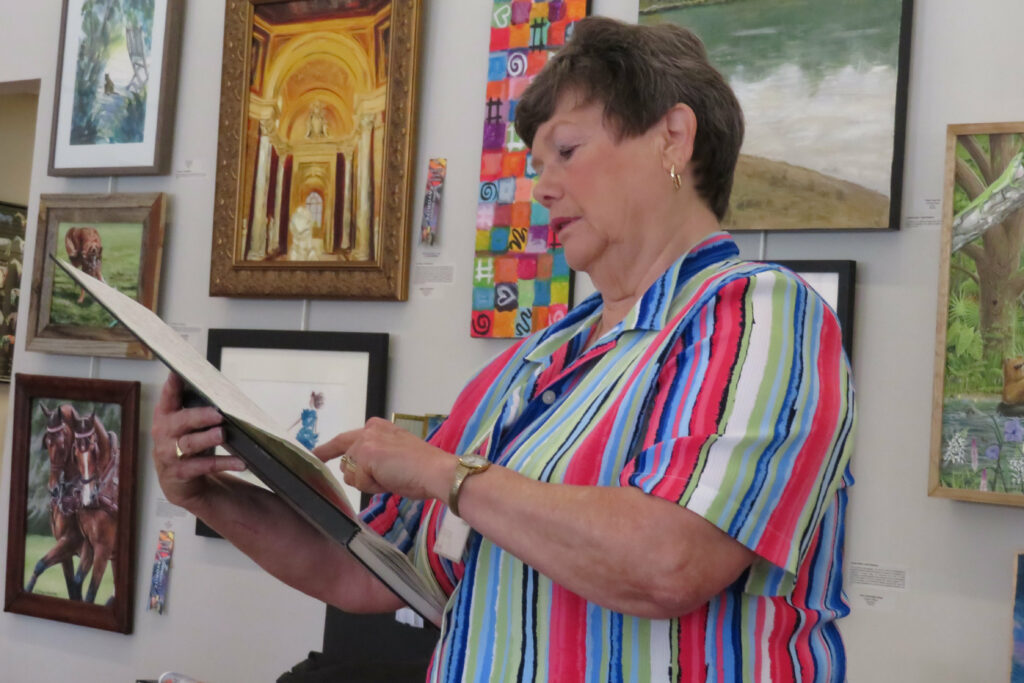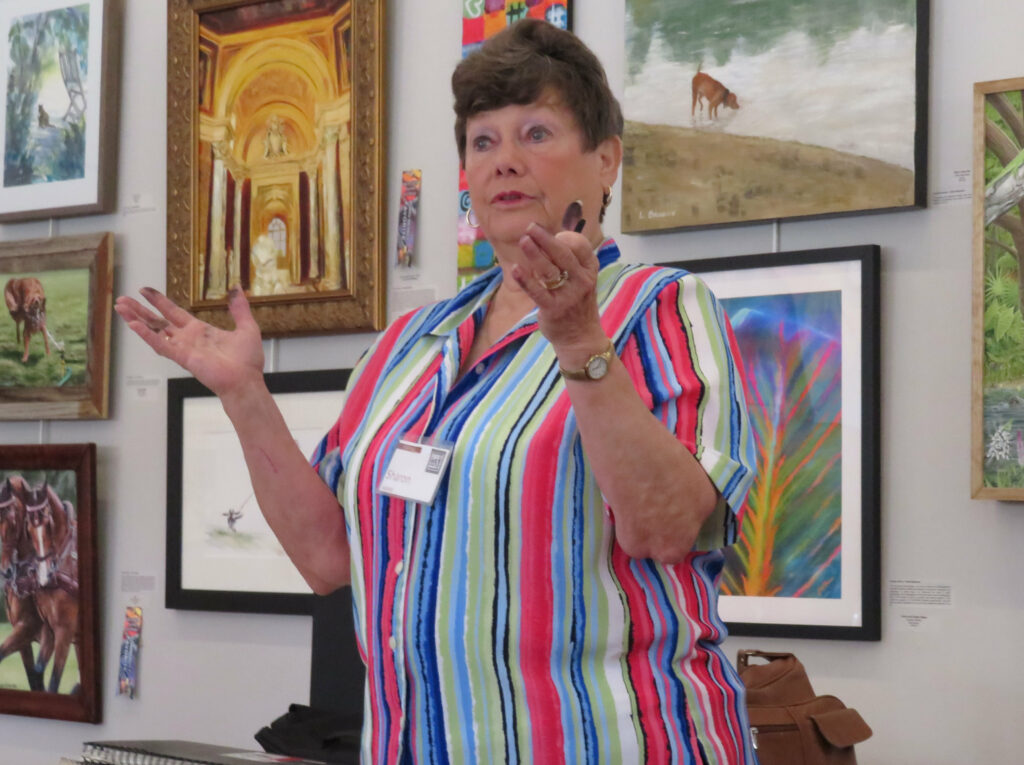
“Many artists carry their sketchbooks from place to place capturing little moments and recording visual glimpses of their activities. Sometimes they can be found making non-recognizable little marks and “doodles.” That’s me, I like to doodle, but years ago I was shown how to channel them from just being an ill-defined squiggle of lines into a visual tool to expose my subconscious feelings. These are analog drawings where a dot, line, mark or value is used to represent (compare to or analogous to) a feeling or situation. These sketches differ from the “doodle” in that they begin by being prompted by a feeling rather than the lines being picked through to find some meaning.
So, as I have taught many of my drawing students, learning to channel your feelings into your personal visual language of dots, marks, lines and values can help you to discover your subconscious feelings and thoughts. You can take this understanding and be more sensitive to how to use your visual language on a final artwork. The analog drawing is non-objective, it is not representational, nor are you striving toward a final product. It is just a fun tool to use to help you map your feelings in a visual form. “
Sharon Harris
Have you ever looked at a painting that depicted a serene setting, yet you felt tension and unease? In this hands-on program Sharon presented a valuable technique to develop the appropriate underpinnings of our paintings, a way to ensure that a painting conveys the desired mood and emotion.
Analog drawing draws from the right side of the brain, putting aside the analytical and allowing our feelings to guide the drawing tool, harnessing the power of line to capture the unseen qualities of the subject in an abstract drawing. Line is the basic element of a sketch, but simple lines can be straight, curved, jagged; continuous, broken; vertical, horizontal, diagonal; thin, thick; light, dark. Placed within a simple 4” x 5” rectangle, these lines become a visual language.
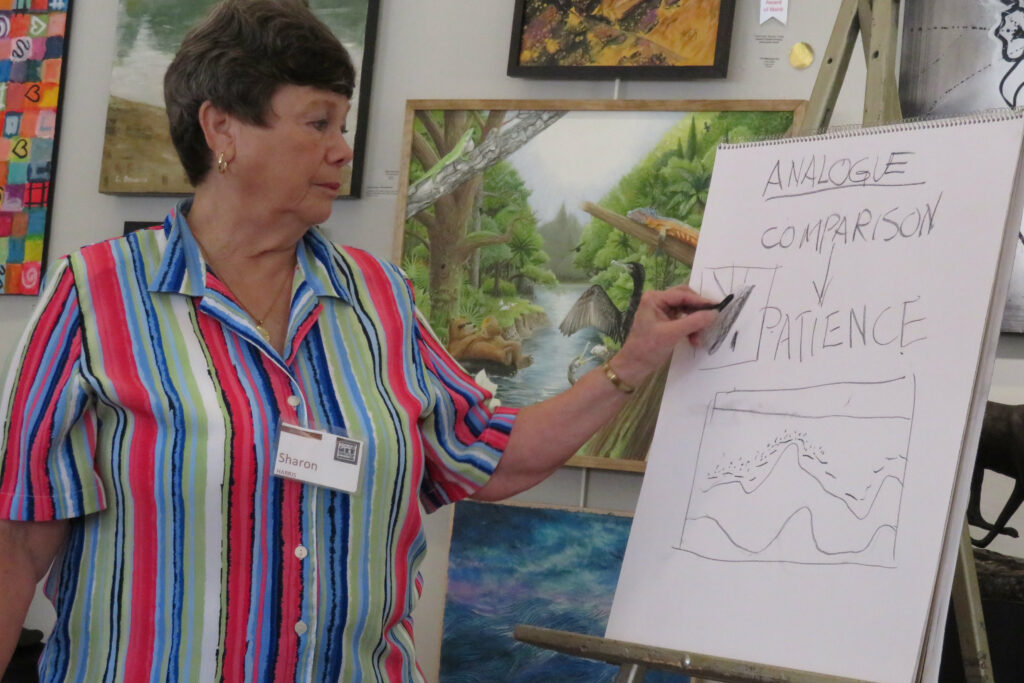
Sharon encouraged us to keep a sketchbook and draw every day. However, instead of trying to sketch an accurate representation of what we see, it is easier to write notes, simple words or phrases about the subject, describing its qualities, and how the place, object or person makes us feel. Next, draw a roughly 4” x 5” rectangle and begin to draw lines to depict those qualities and feelings.
How does “sad” look? , “joyful”, “patience”? “anger”? “rigid”? “tranquil”, “powerful”?
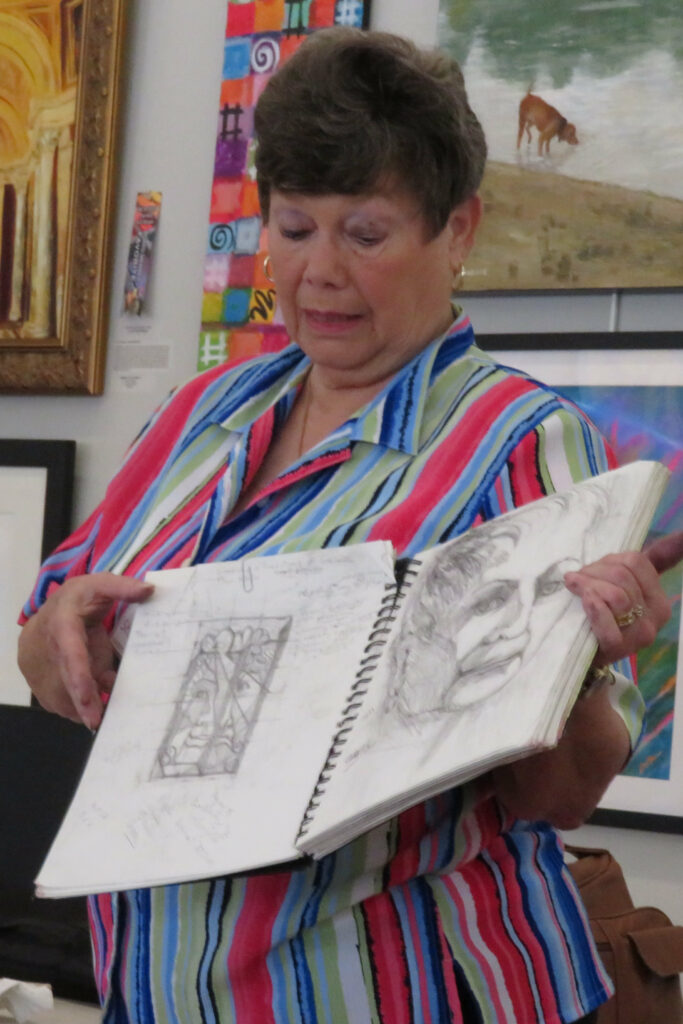
That two-minute sketch suggests an underlying structure for the work you may develop later. The simple sketch will probably not be obvious in the finished work, but, paying attention to the analog drawing will help set the underlying framework for the desired mood and emotion that you want to share about this subject.
The sketchbook is an artist’s journal. Look back through your sketches and analog drawings for inspiration. You might decide to elaborate on one “doodle” just as an abstract work.
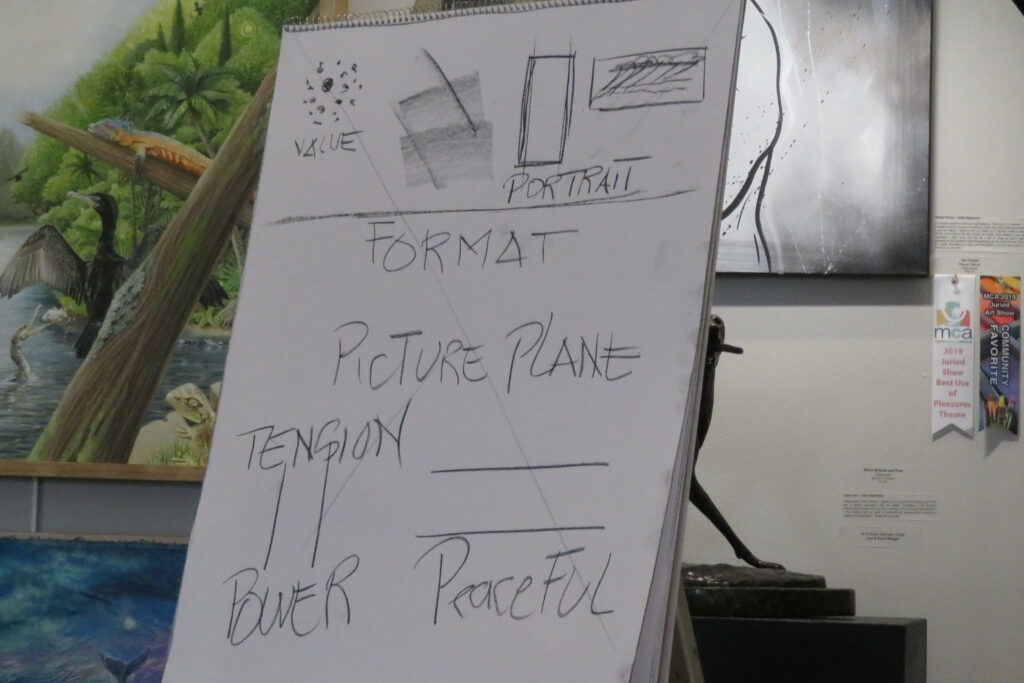
More thoughts… Portrait orientation of the frame creates more power and tension while the landscape orientation is peaceful, restful.
Consider too… Placement of the subject on the left, facing right, looks to the future, full of hope and promise. Placed on the right facing left, the subject looks to the past, perhaps celebrating achievements.
Thank you, Sharon, for sharing this valuable tool of Analog Drawing that will help us capture feelings in visual language of our art work, and for giving us a new perspective on keeping a sketchbook.
